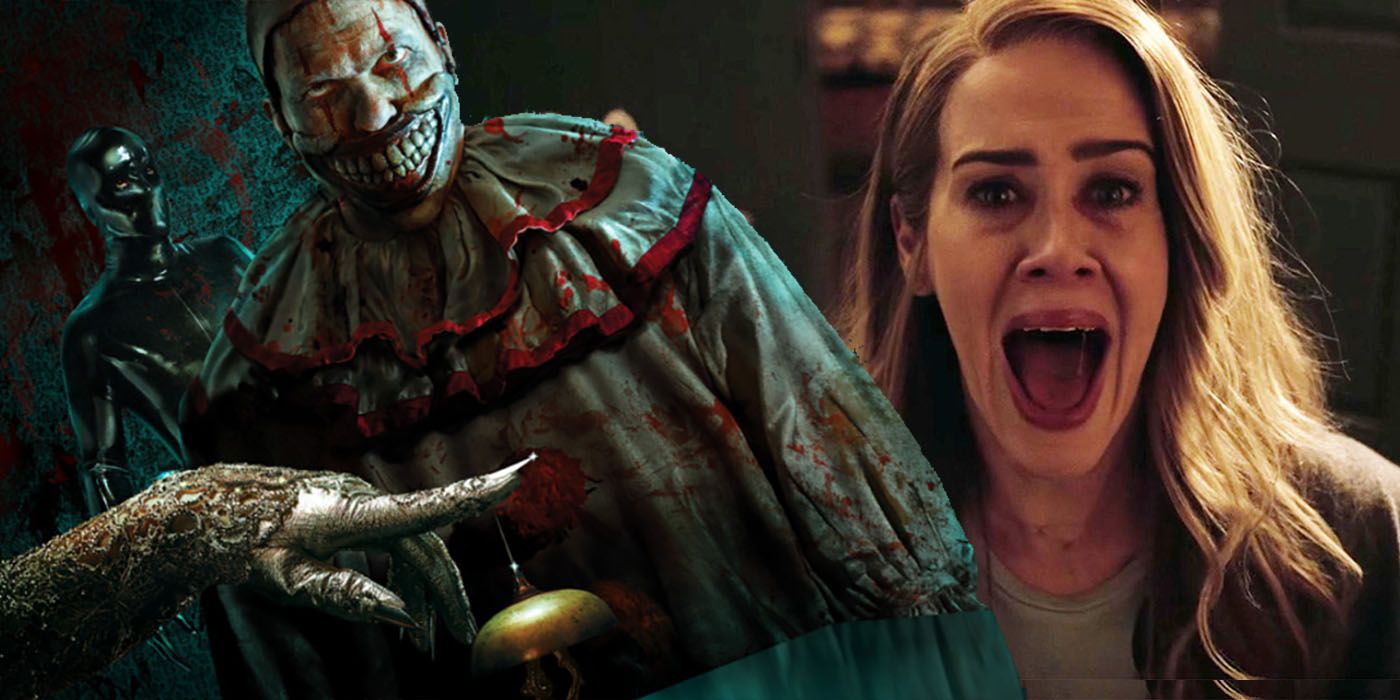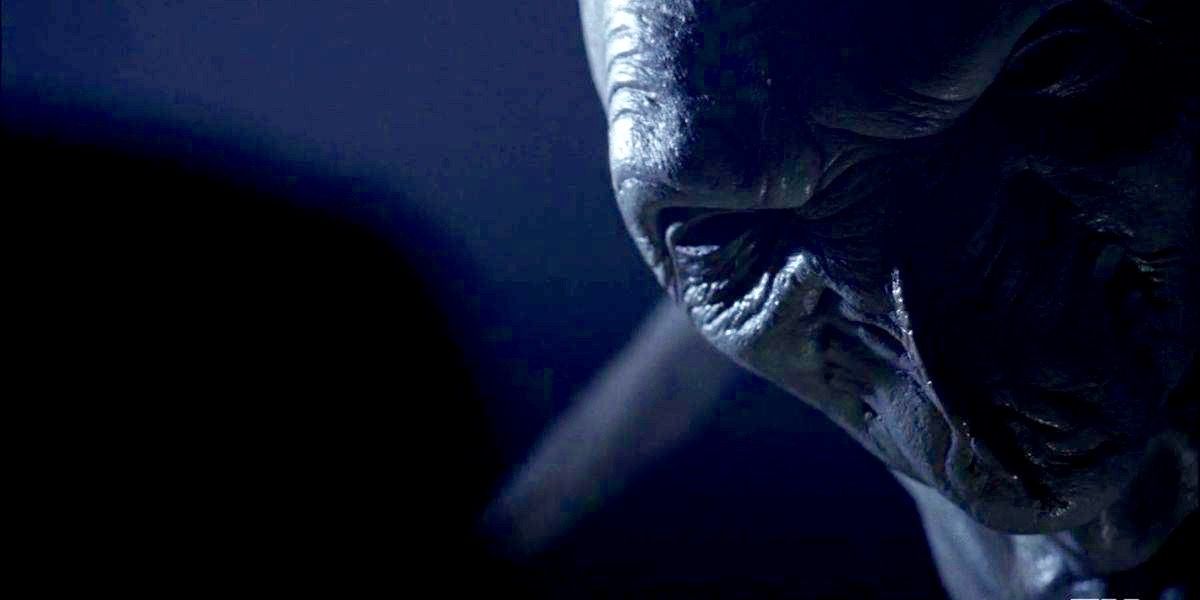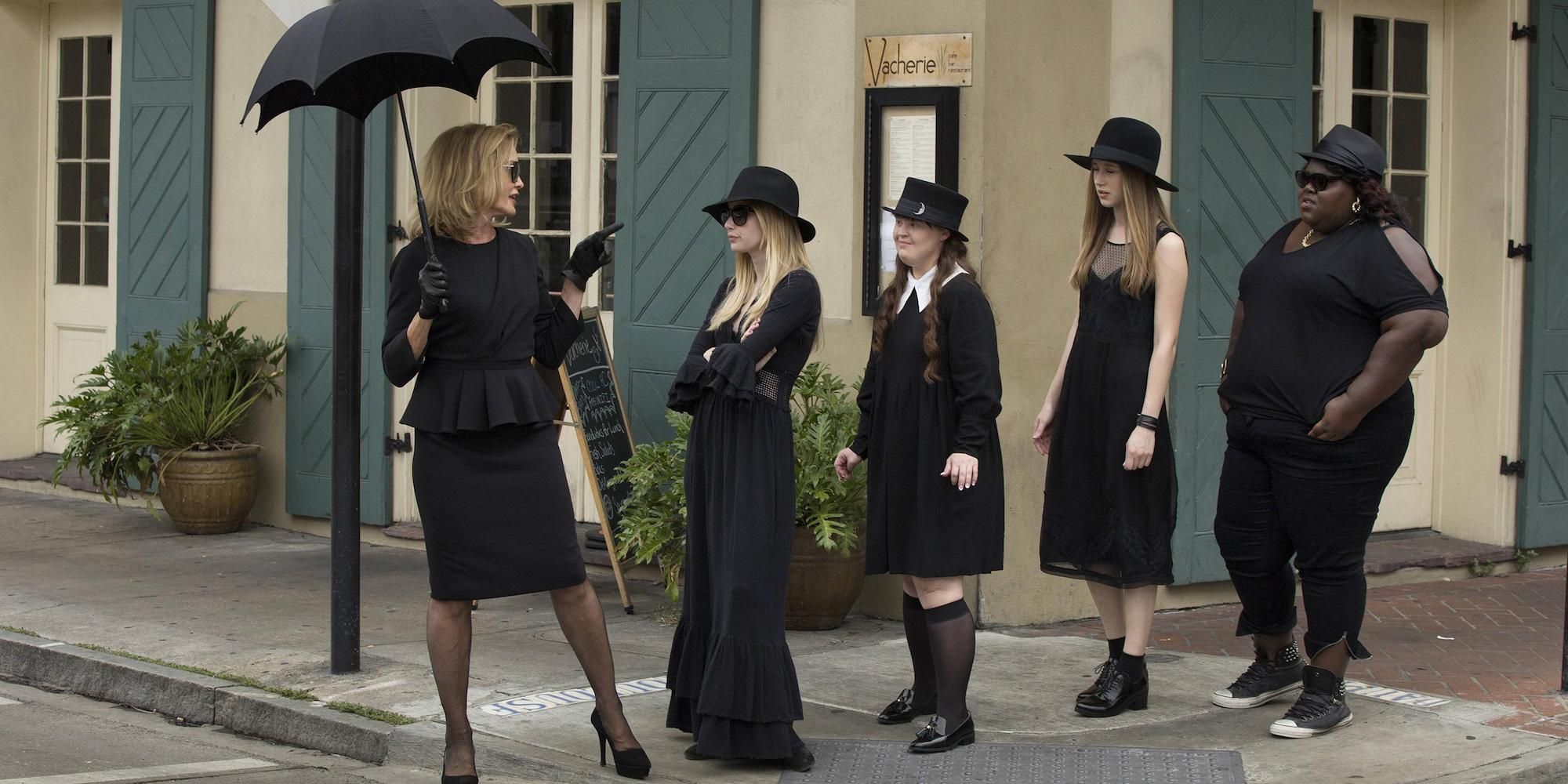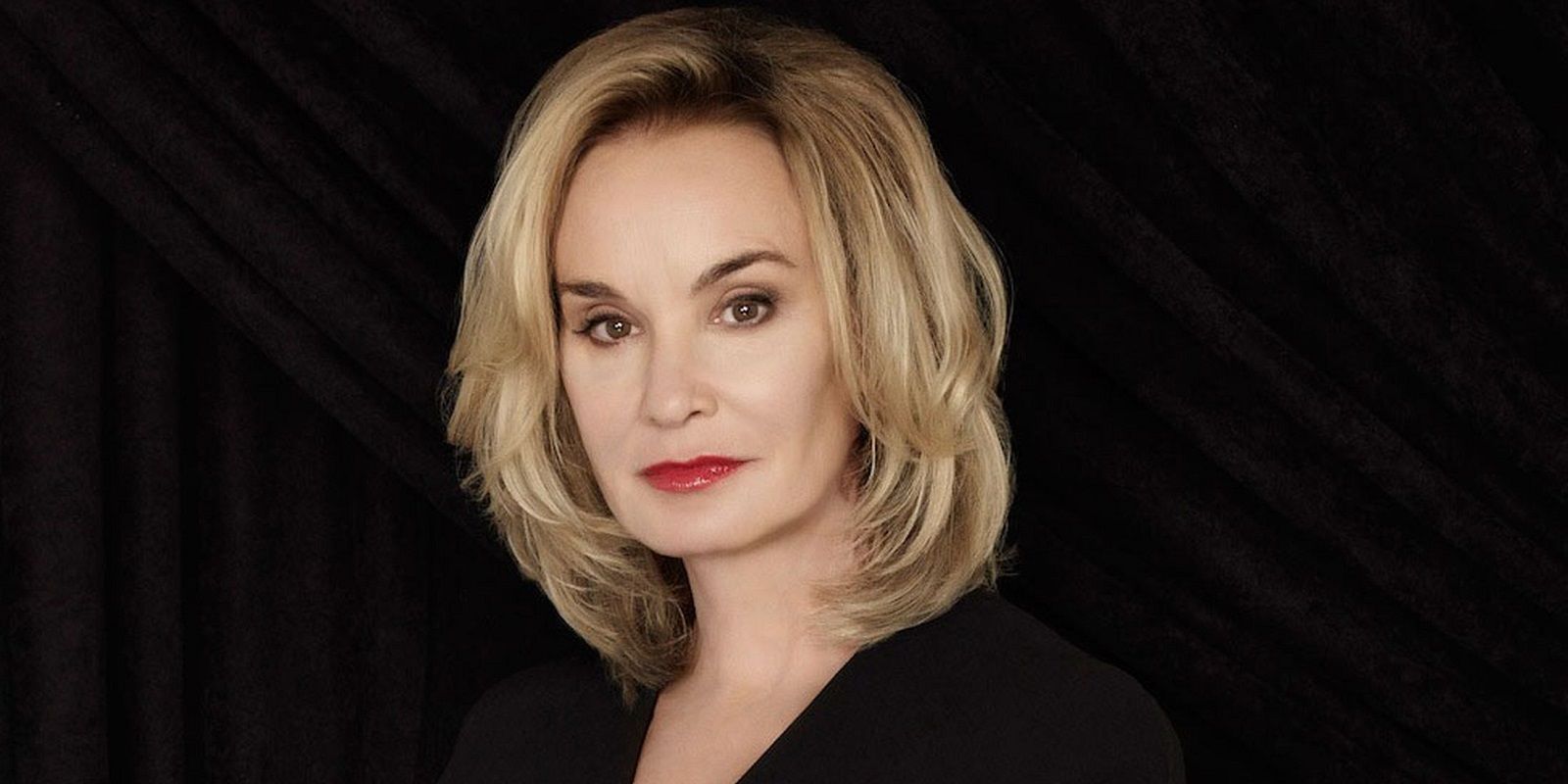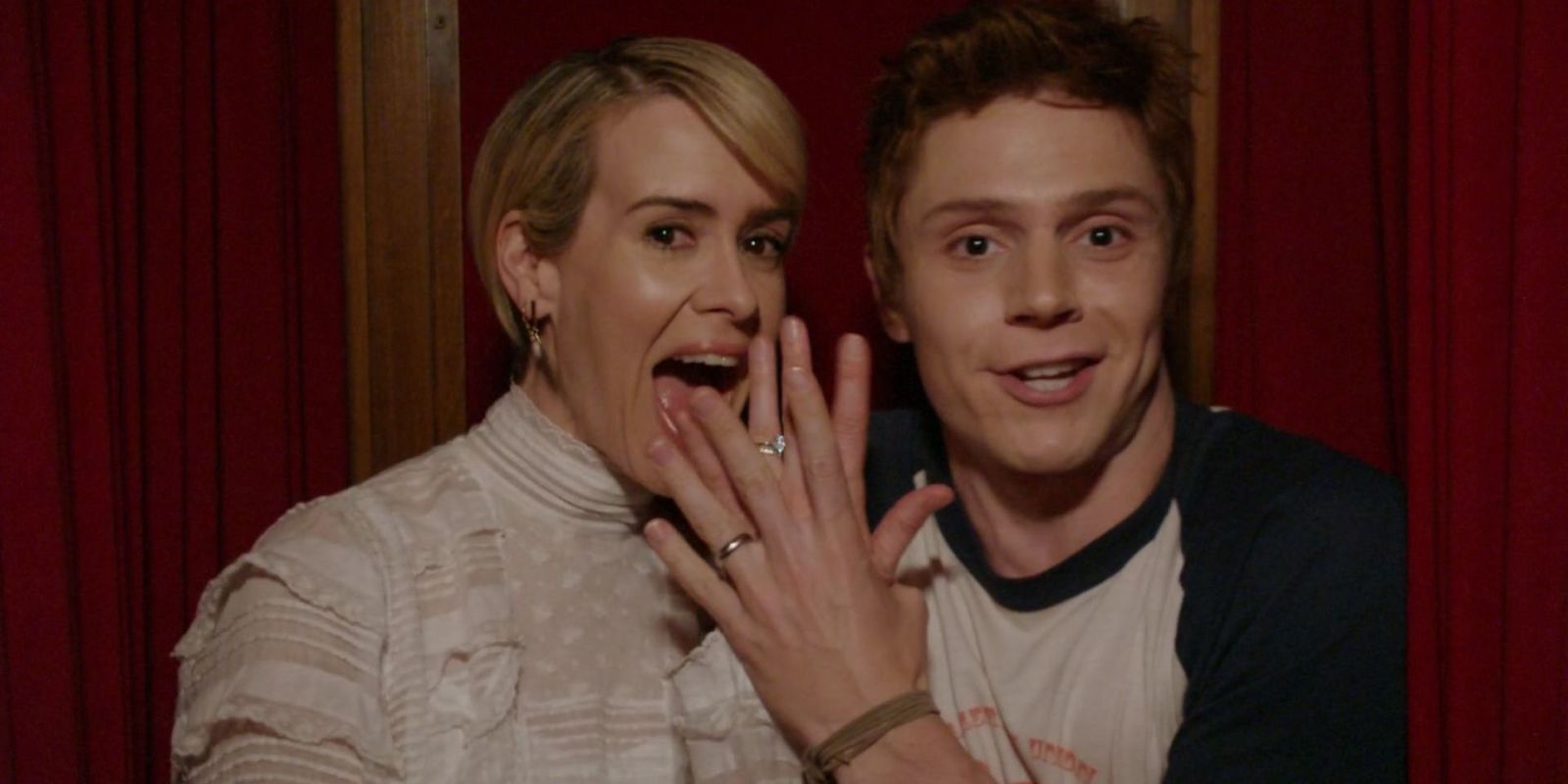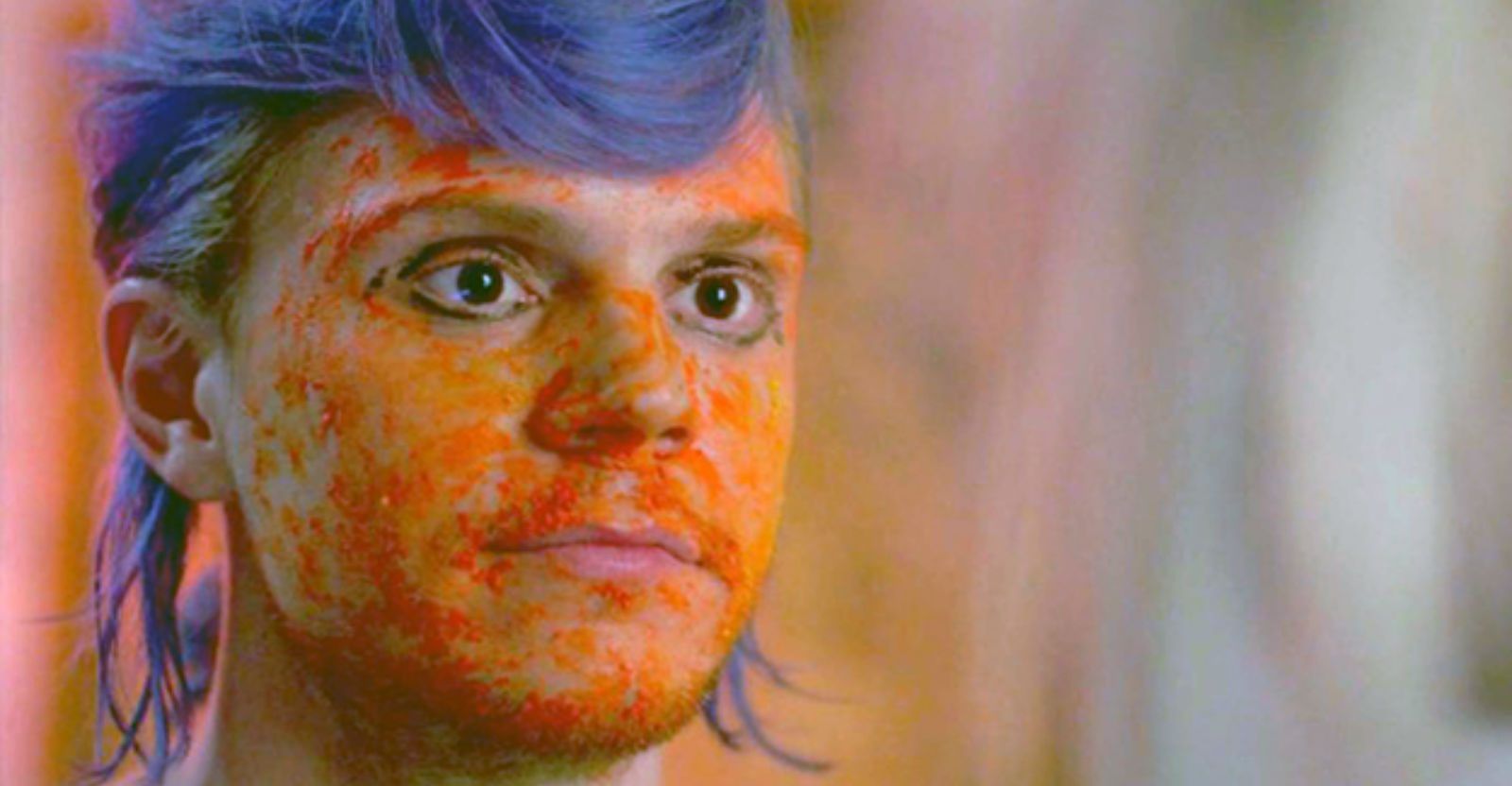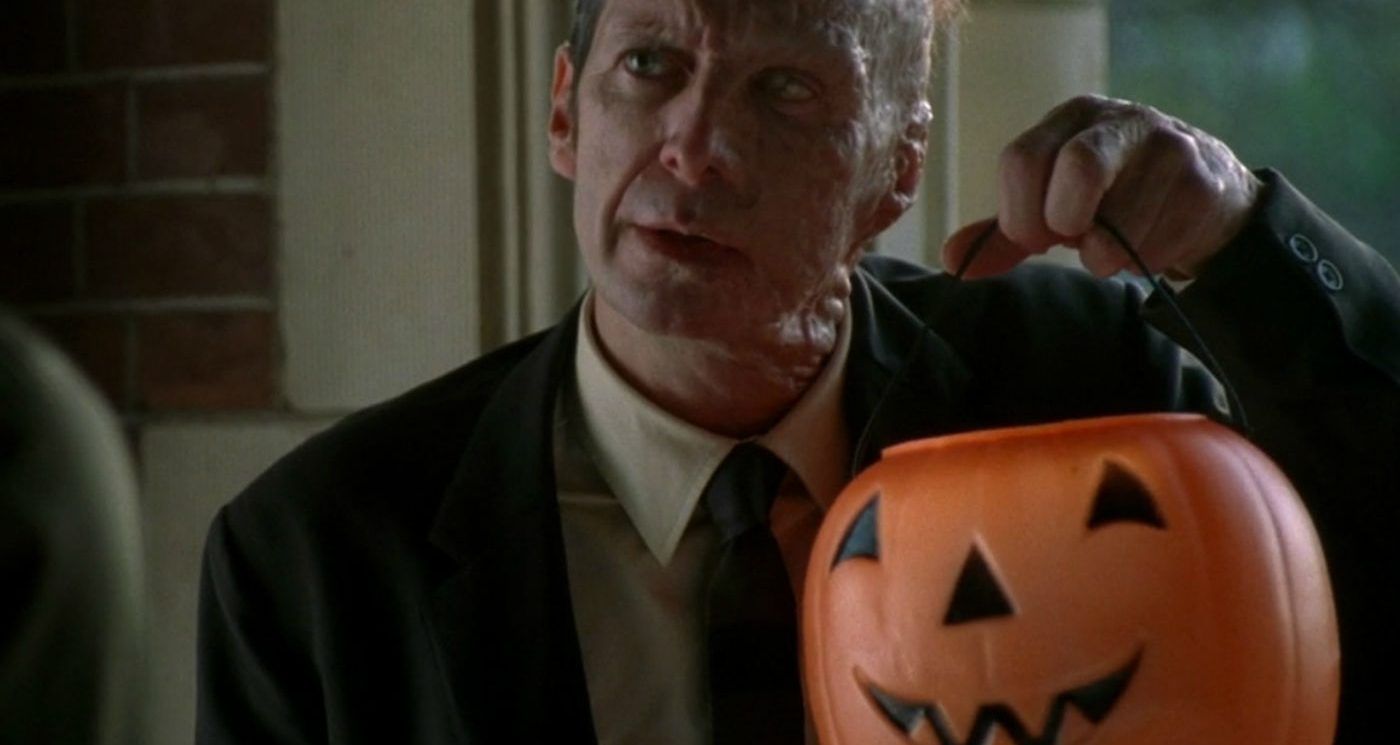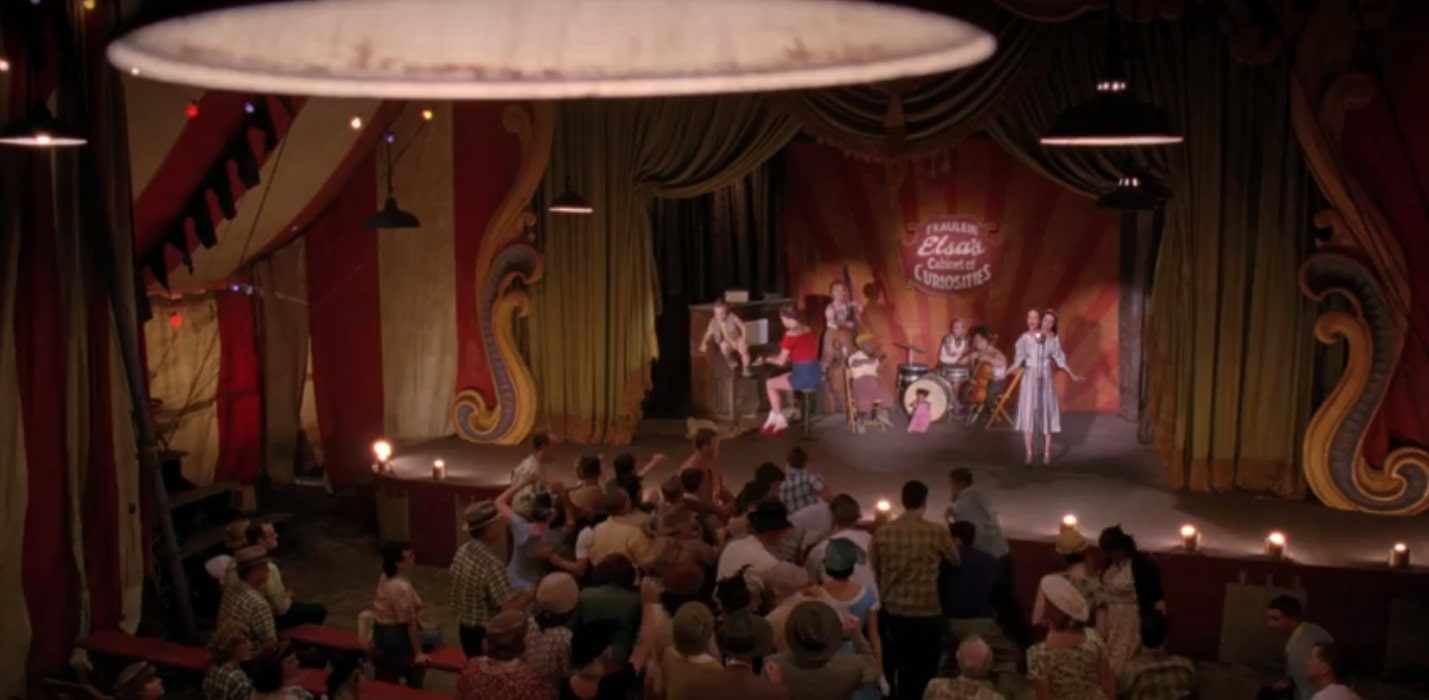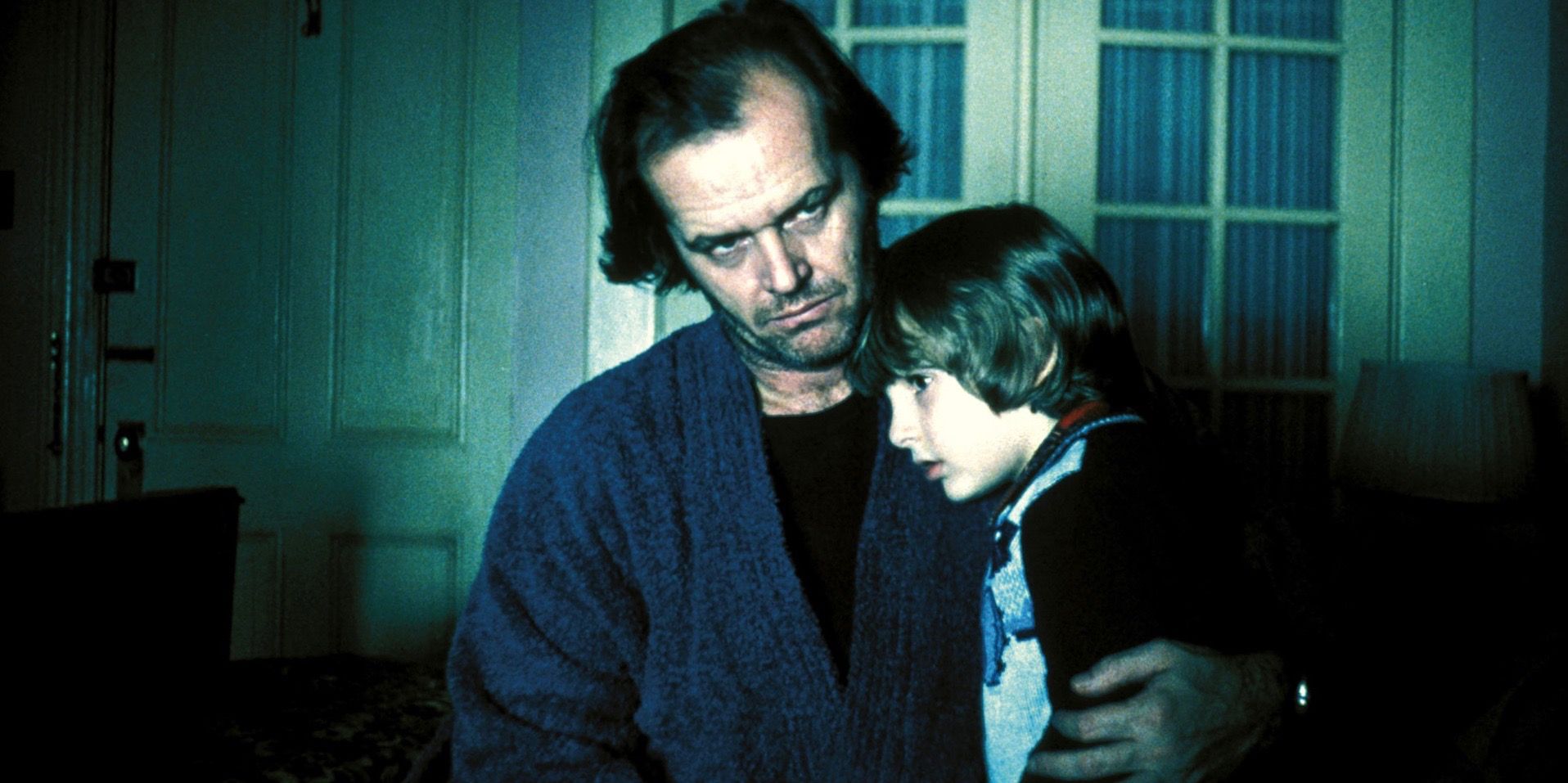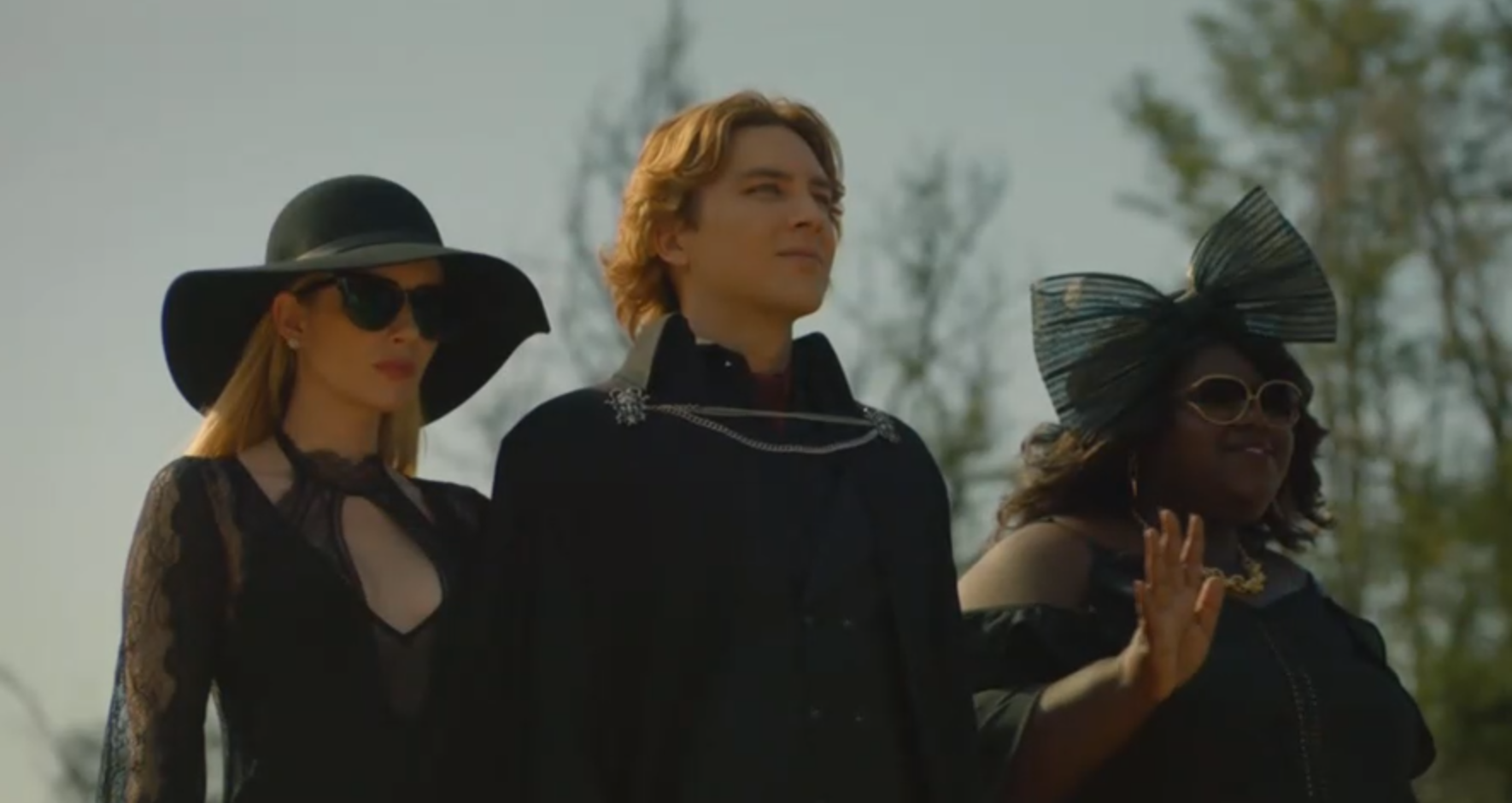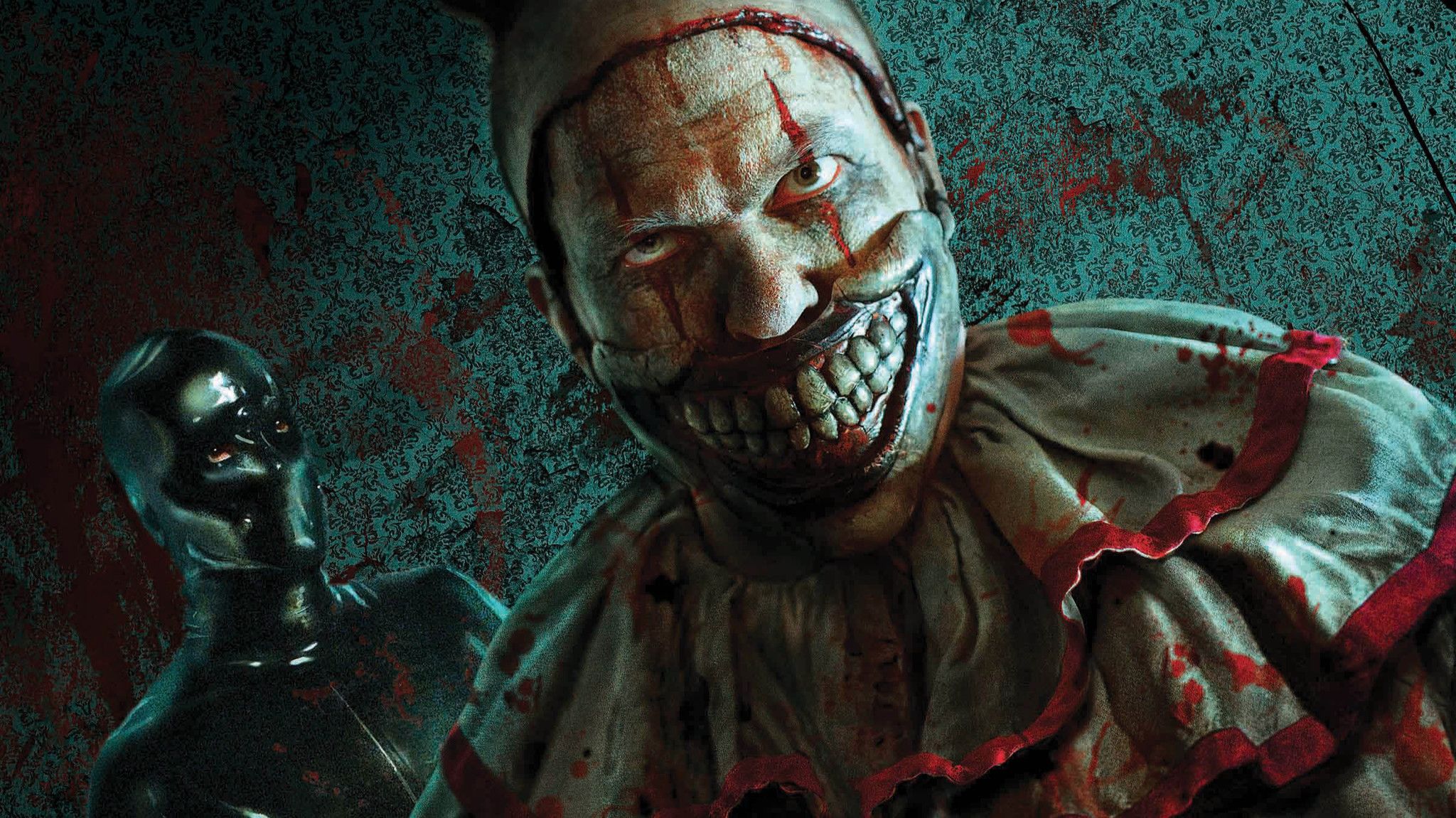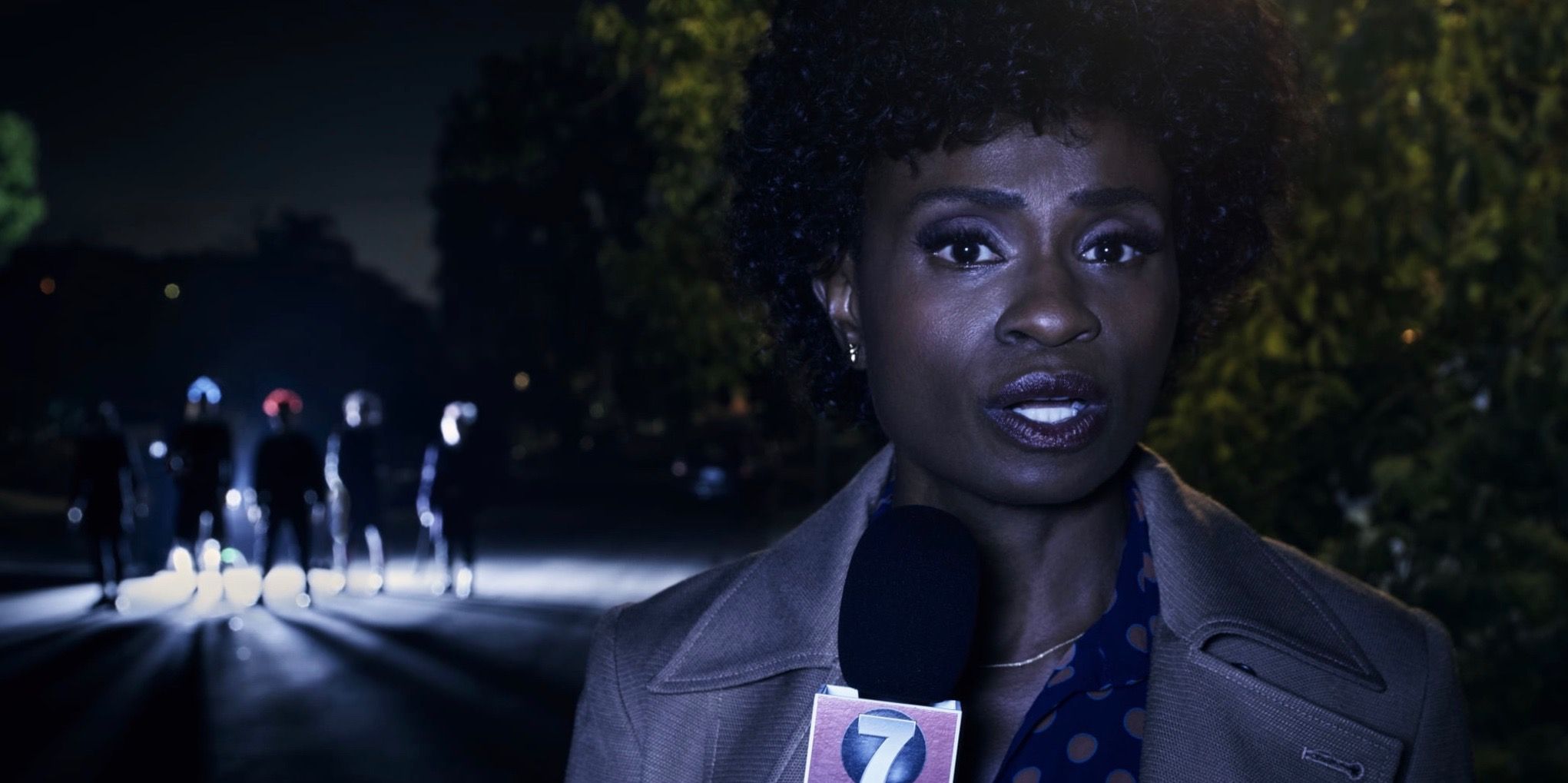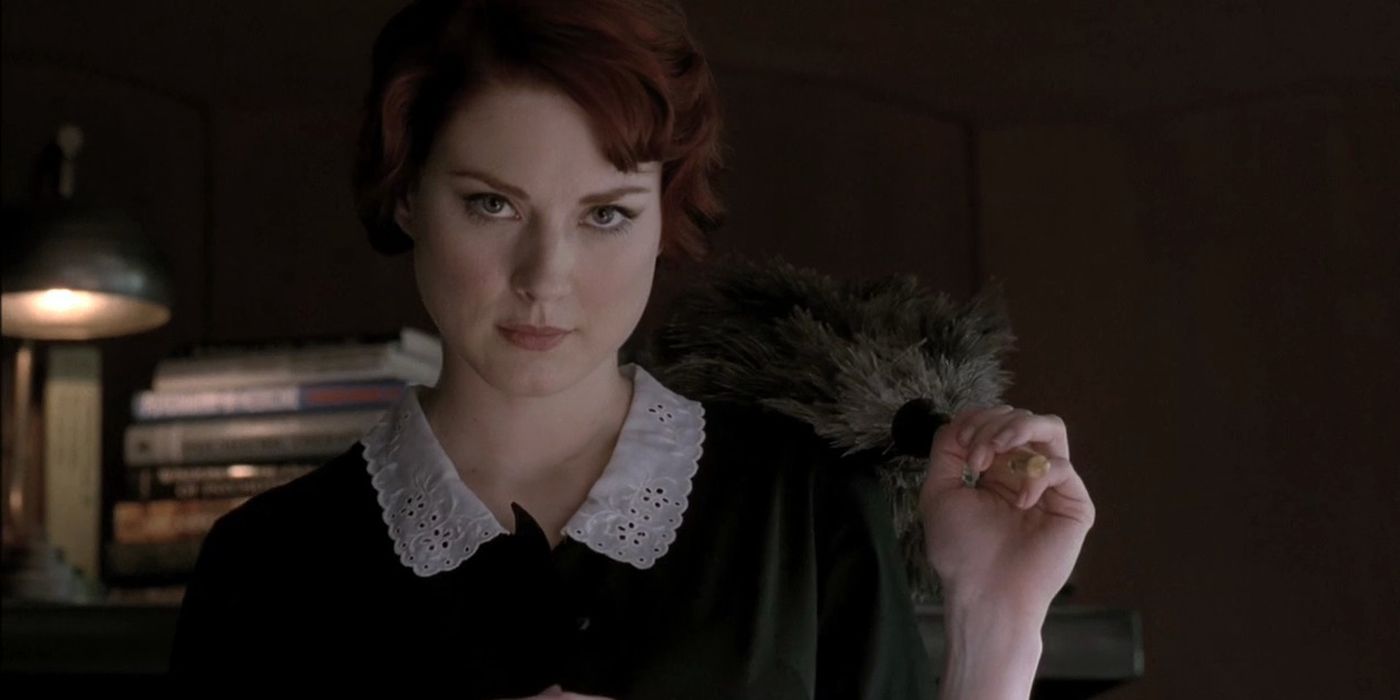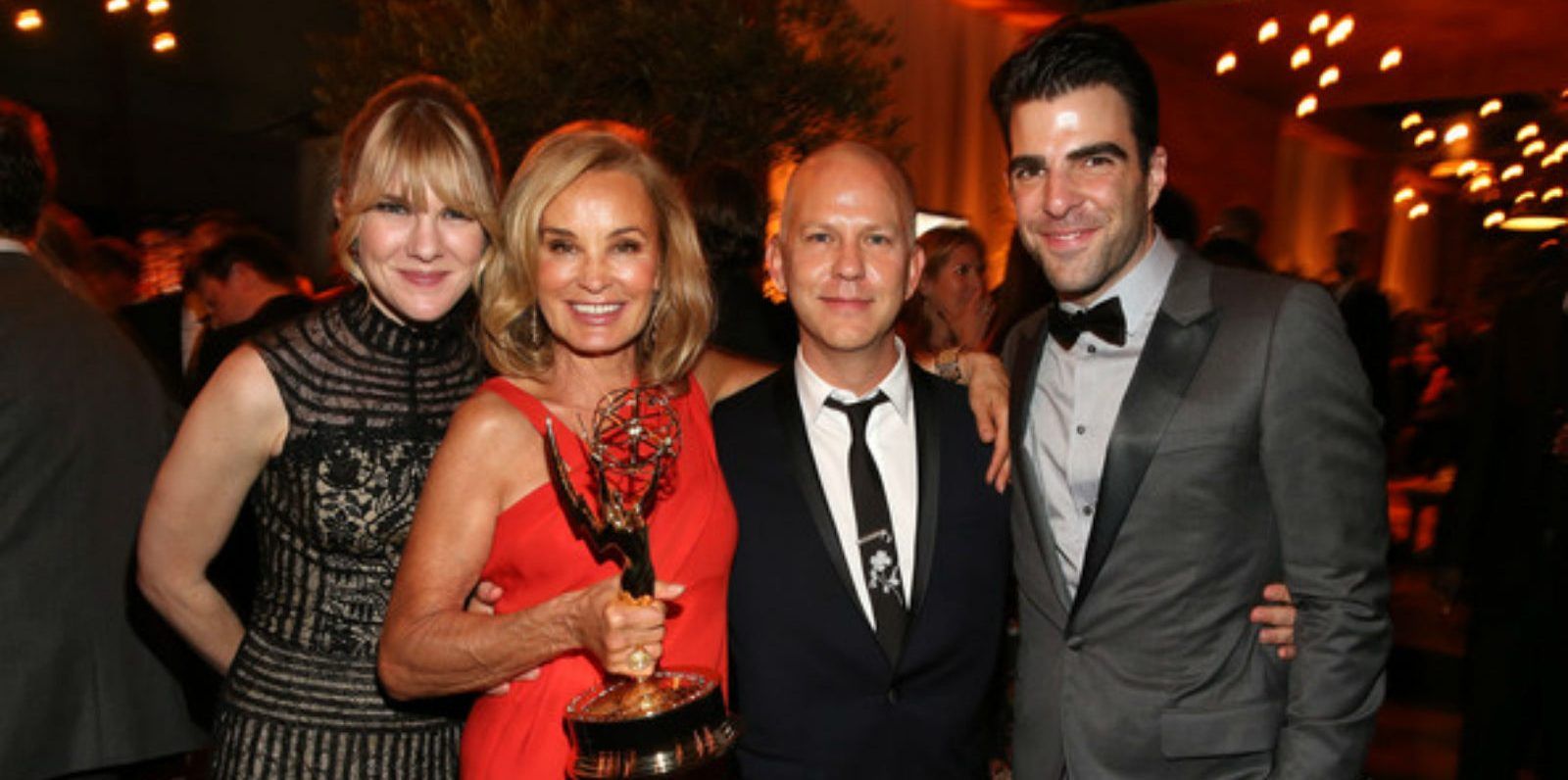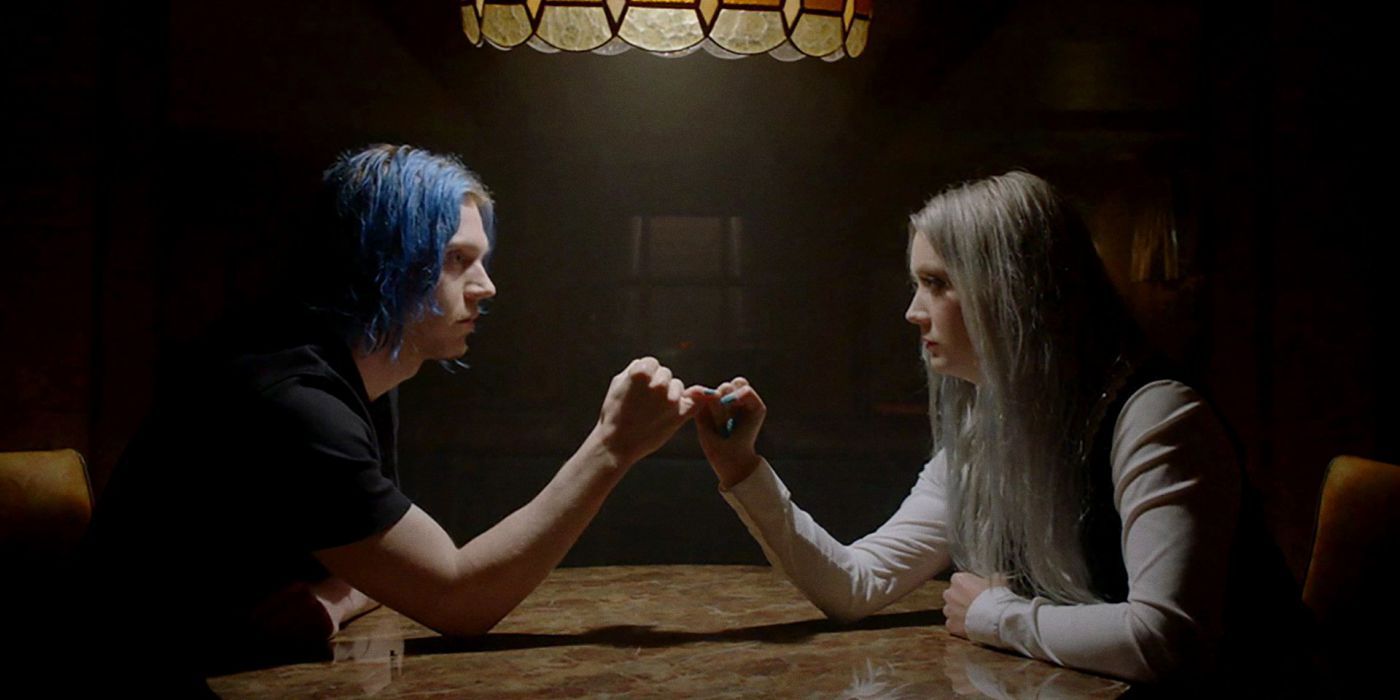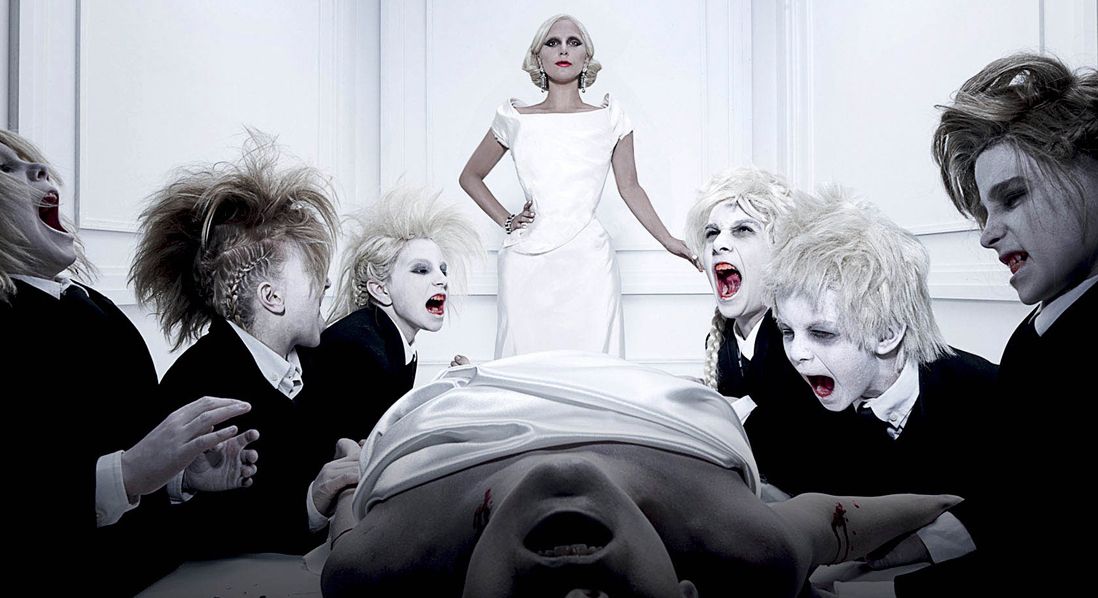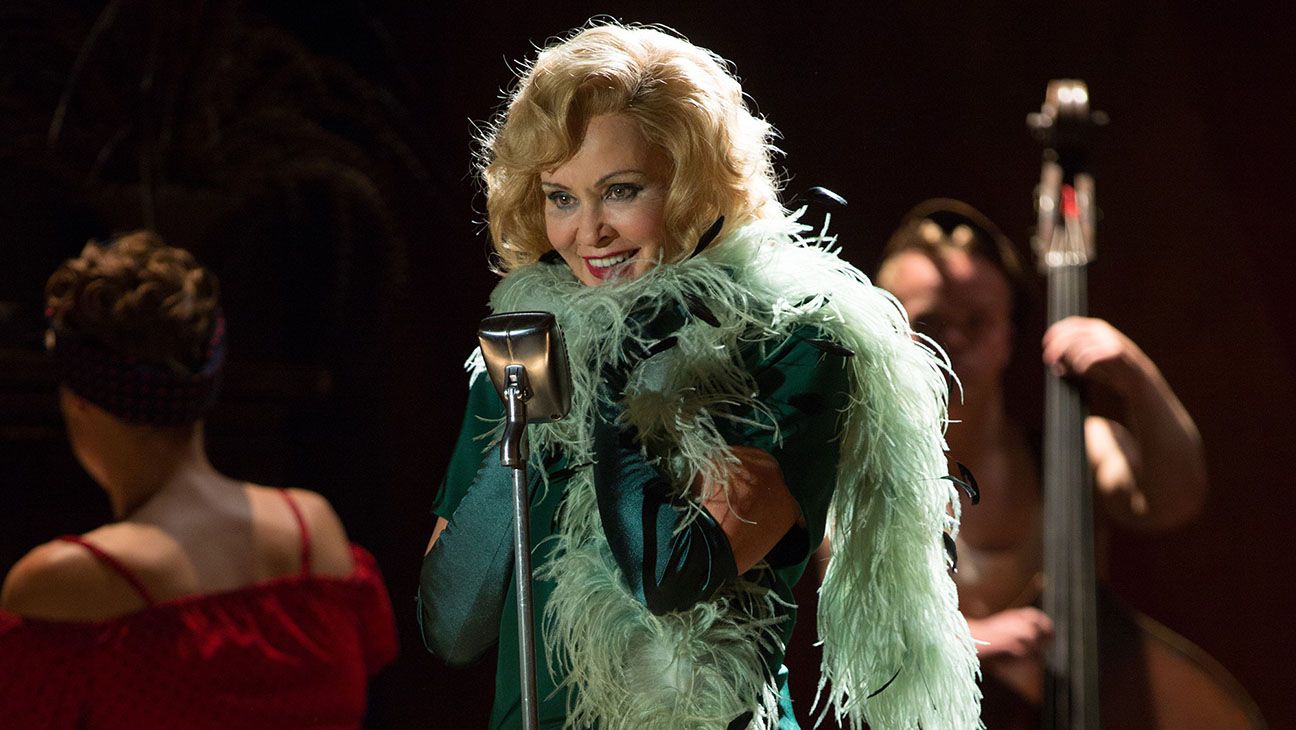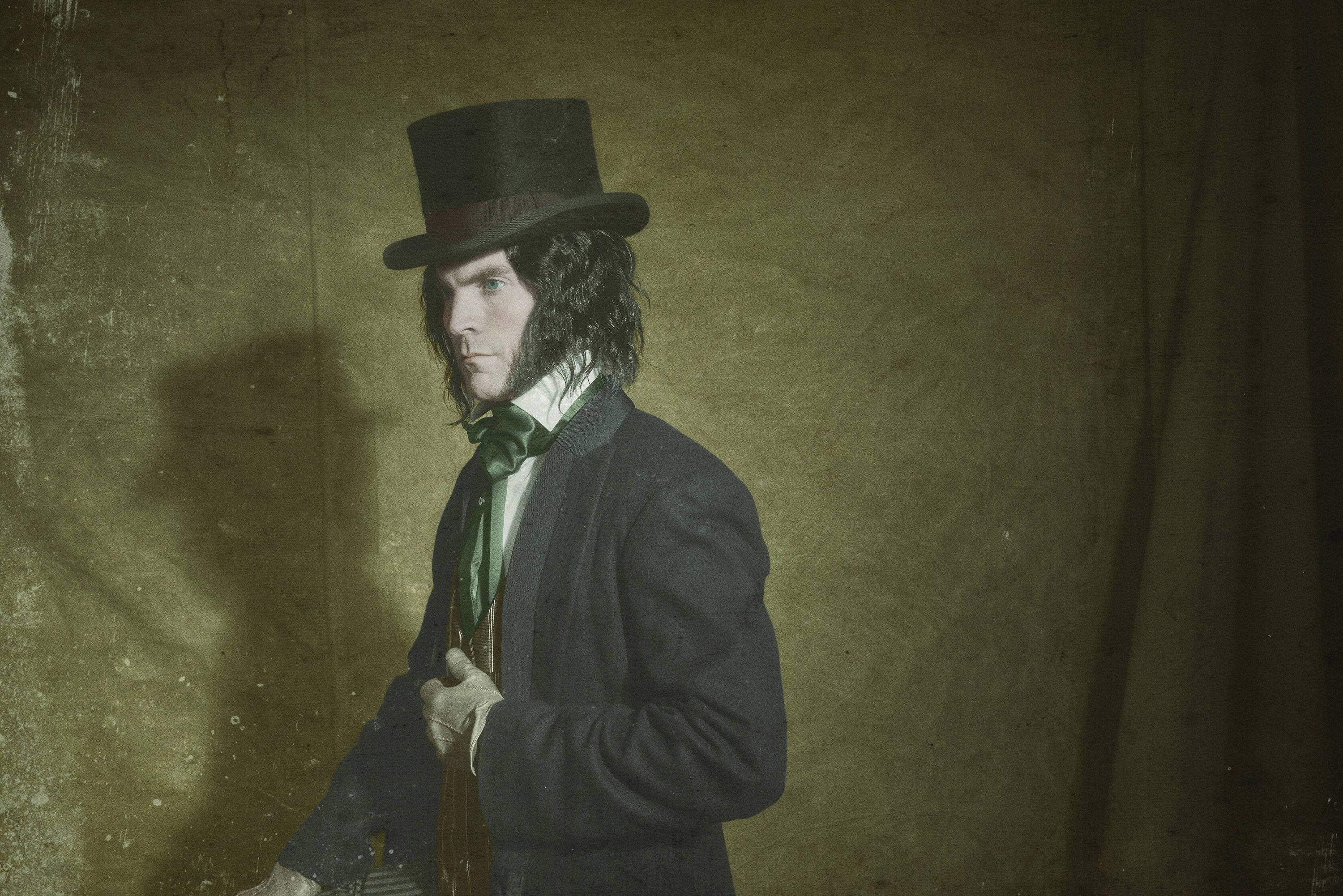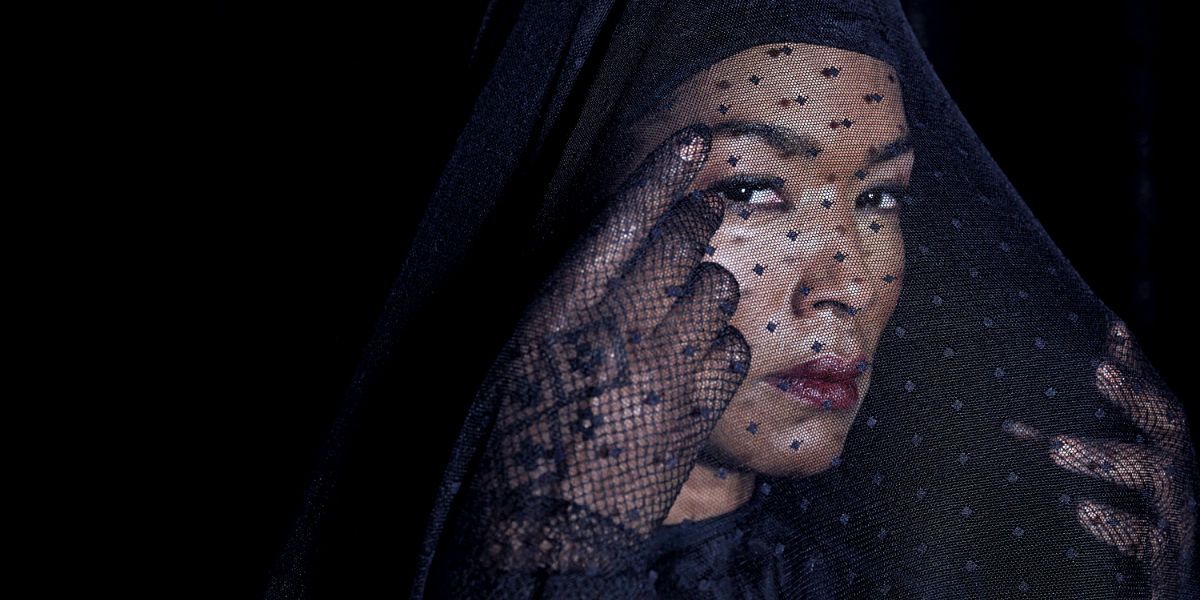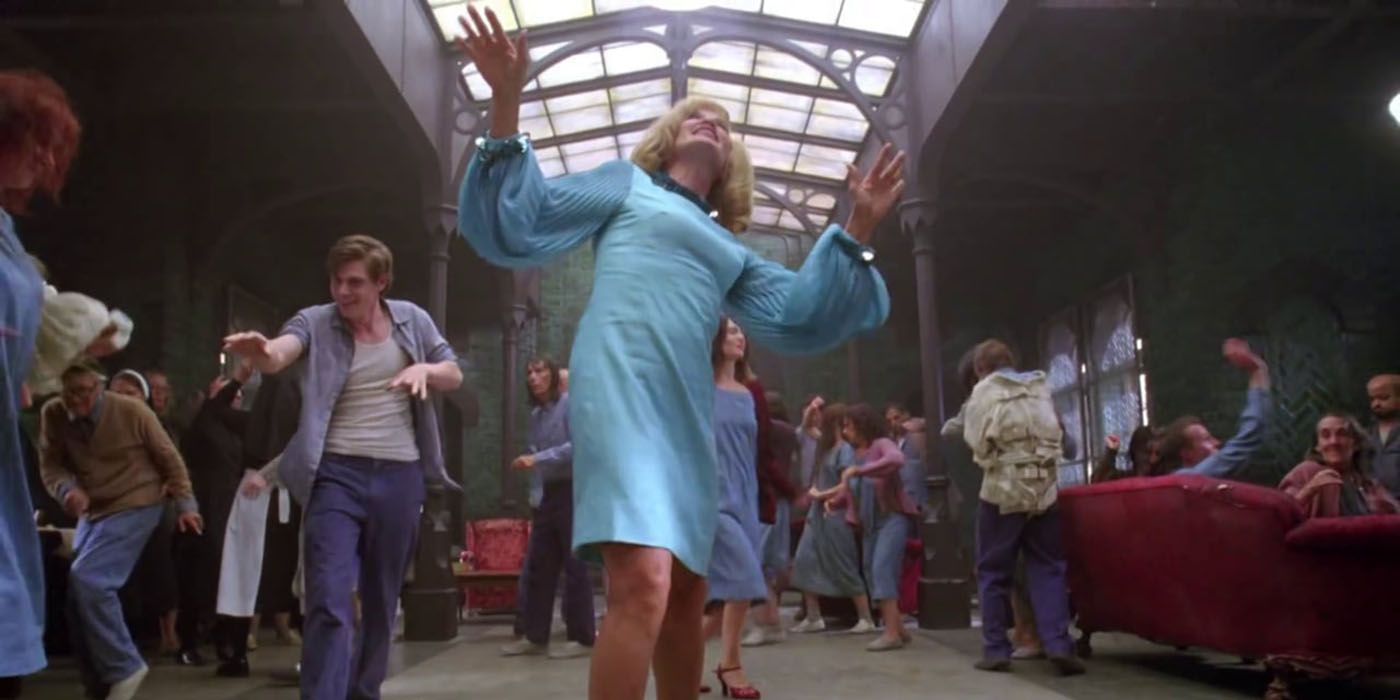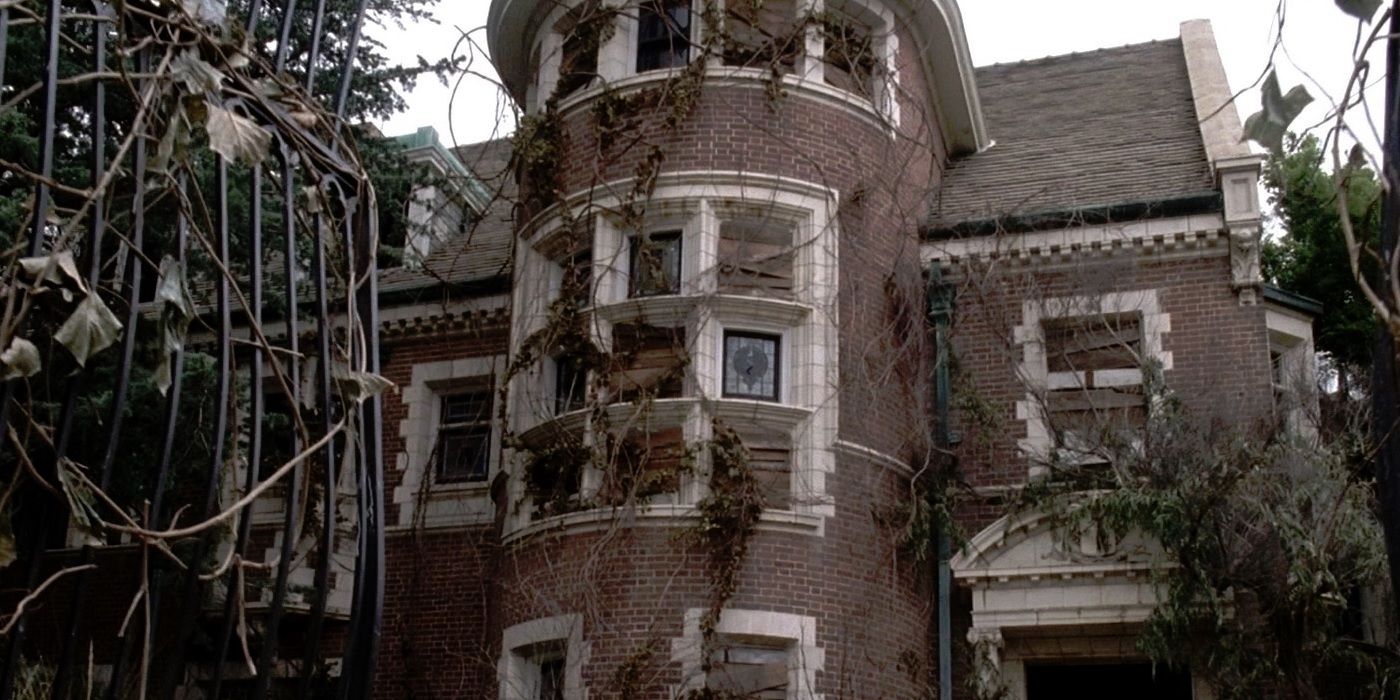American Horror Story is an intense show, and because of this, it gets some wild reactions. Fans have come to expect the macabre and over-the-top episodes season after season. This is, after all, a show that packed more shocks and twists into its first episode than some shows manage in a whole season.
Apocalypse, the most recent season, has made good on years of Easter eggs and hidden clues. Fans have long been poring over each episode for clues about the next season or call-backs that might reveal how or if everything ties together. Apocalypse hops between past seasons so much that each fade out is a chance to jump through space, time, and the mortal coil, with the writers validating some fan theories while leaving others hauntingly on the hang.
Given the show’s propensity to mislead viewers or include huge U-turns within the each story, it’s not surprising that AHS evokes strong opinions. Fans are quick to point out plot holes or loose threads (think Roanoke’s teeth rain). However, the writers aren’t the only ones who lose the plot occasionally. Some things about AHS go under the radar for even the sharpest fans.
With that said, here are the 20 Things Everyone Gets Wrong About American Horror Story.
Asylum’s aliens were a metaphor
If fans still weren’t sure what to expect after season 1, Asylum cemented a reputation for throwing in everything including the kitchen sink. It had the asylum, violent psychopaths, Nazi scientists, monsters, torture, creative uses of human skin, and exorcisms. However, for some viewers, the inclusion of aliens was a step too far and transformed a packed plot into an overstuffed one.
However, the producers disagree. In an interview with EW, Ryan Murphy explained that the aliens were “an obvious metaphor for God” that “fit very easily into the world of a Catholic sanatorium asylum.” Co-producer Tim Minear also said that “those aliens are the closest things to angels” in a season harping on the theme of religion versus science and staffed with religious imagery.
The cast doesn’t always understand the story
AHS has been known to frustrate viewers by having its cake and eating it too (see Freak Show’s extended fantasy sequences), leaving audiences scratching their heads. However, they aren’t the only ones often left in the dark — the cast feels it too.
Speaking to Ryan Murphy’s roster at PaleyFest following the conclusion of Roanoke, ET found that some cast members were confused by the show’s plots. Sarah Paulson still wants to know what happened with the aliens, while Cuba Gooding Jr. doesn’t understand if his spirit is still in Roanoke. While some of the actors’ questions — like what happened to Misty Day — have been answered in later seasons, other points ranging from basic plot points to philosophical questions of morality remain shrouded in mystery.
Ryan Murphy (accidentally) caused Jessica Lange to leave the show
Even though she wasn’t the lead, Jessica Lange ran away with Murder House and became the face of the series over four seasons. Lange’s characters drove much of the action, and she adopted new accents and personas every year. For the first half of AHS history, Lange was the star.
When she announced that she wouldn’t be returning for season 5, the press was eager for any gossip of bad blood. Alas, the opposite was true. As Ryan Murphy explained in an interview with Collider, one of the ways AHS can get stars like Lange is by asking for a season-long commitment. When Lange decided to leave, it wasn’t so much a shock, but it was Murphy’s doing. She left to do a play, one which Murphy had introduced her to.
Only two actors appear in every season
Unlike a lot of other anthology shows, AHS keeps a consistent roster. While the cast changes year-to-year, viewers can expect familiar faces to pop up in main roles or cameos across seasons. Given Ryan Murphy’s inclination to work with the same actors repeatedly, AHS has earned a reputation for using the same actors over and over.
Despite this reputation, though, only two cast members have appeared in every season: Sarah Paulson and Evan Peters. Peters is also the only actor to have a main role in every season. Lily Rabe and Frances Conroy both appeared in all but one season. Even though Peters holds the record for appearing in the most AHS episodes, no actor has appeared in every episode.
Cult’s infamous Cheetos scene was meant as a warning
Cult was possibly the most divisive season. Adding politics to AHS’s madcap narratives certainly helped up the crazy factor. No moment made this clearer than the first episode in which Peter’s character Kai dons an orange face with the help of crushed Cheetos. While this prompted countless crazy reactions, Ryan Murphy was happy to explain: “Evan really put real Cheetos on his face, but it was also meant to be a bit deeper,” he told the Hollywood Reporter. “Evan's character was making that statement and rubbing it into Billie Lourd's face, that she really was looking in the wrong direction.”
Murphy added that it commented on how mainstream media was mocking the supporters of a current world leader, which, in his words, "led to the shock of, 'Oh, they haven't been taking these people seriously. They're not jokes. There's something [going] on there.' That's what that scene is about.”
Halloween isn’t always a big deal for the show
For a show with "horror" in its title, it’s understandable that Halloween factors into AHS in a big way. Murder House’s Halloween two-parter set high expectations for future seasons. Coven and Freak Show embraced the holiday, Hotel made it a plot point, and Apocalypse managed to include it despite the fact that the world had ended.
Still, the holiday barely gets a mention in Cult and is absent entirely from Roanoke. However, Asylum might be the biggest omission. The second season barely mentions Halloween beyond the name of an episode ("Tricks and Treats") even though it was the first AHS season to actually air on Halloween night. In fact, even though a new episode of AHS has debuted on Halloween three times (Asylum, Cult, and Apocalypse) none of these episodes were Halloween-themed.
The songs in Freak Show were supposed to be anachronistic
Freak Show is set in the 1951, so when Jessica Lange’s character Elsa Mars starts singing David Bowie’s 1971 hit "Life on Mars", audiences were confused. Was AHS adding time travel to the mix? The anachronisms didn’t stop with Bowie, either. Nirvana, Fiona Apple, and Lana Del Rey songs were belted out by different cast members. Rather than using time travel to explain the inclusion of these songs, the writers and producers found a way to scratch a musical itch in a thematic way.
As Ryan Murphy told E!, Freak Show was meant to be many things, including a homage to Baz Luhrman movies. The writers toyed with inserting aspects of jukebox musicals into the season. To bolster the theme of persecution and the need for tolerance, they specifically included songs, Murphy said, by “artists who have identified as odd, different freaks, that felt like outcasts.”
Hotel’s biggest influence wasn’t the shining
When Hotel was announced as the title of the fifth season of AHS, fans and horror-philes went gaga over the possibilities. Considering that two of the most seminal horror movies — Psycho and The Shining — were set in hotels and knowing that AHS isn’t afraid to use every trope at hand, fans expected homages.
While The Shining did get a shout out (check out the Hotel Cortez carpets) and Psycho’s DNA is all over the franchise, Hotel’s biggest influence was a lesser known movie called The Hunger. For proof, check out these comparisons. Everything from the music to the sets to Lady Gaga’s arc was borrowed from the cult film starring Catherine Deneuve, David Bowie, and Susan Sarandon. While it might not be one of the most well-known horror movie, AHS went all in trying to capture its style.
Some seasons are more connected than others
Given the revelation that all seasons take place in a shared universe, viewers were eager to connect the dots. However, fans tend to forget that some seasons are more connected than others. At this point, each season has some connection to another, but not all of them are as strongly connected as others.
Apocalypse, for example, has been billed as a Coven/Murder House crossover, while Freak Show made waves when it announced that an Asylum character would make an appearance, confirming that we’d seen one of Freak Show’s characters before. These connections can be harder to spot and more narratively rewarding as well. For example, several aspects of Murder House are explained in Roanoke. We find out the origin of the Piggy Man urban legend and the term "croatoan," which makes us wonder if Roanoke might’ve been better as season 3.
It’s not just a scary show
Despite the title, AHS isn’t just about horror. Obviously thrills and chills are a large factor in the show’s image and appeal, but AHS isn’t afraid to let the horror take a backseat to the writers’ other interests.
Coven was considerably brighter and less gloomy than the first two seasons, and Ryan Murphy and co. were open about having Freak Show double as a musical. Hotel, as well, was as interested in emulating a 1980s aesthetic as it was in dishing up scares. More than this, though, the show has often been praised for its comedic elements. If relentless homages and gallows black humor weren’t enough, AHS is also known to be topical. While Cult sought to be extremely relevant, every season contains allusions (and sometimes blatant references) to social ills like inequality and persecution.
It doesn’t always involve the supernatural
AHS obviously has an affinity for things that go bump in the night, so the supernatural gets a lot of screen time on the show. AHS, in turn, has featured a staggering amount of horror tropes even if ghosts, demons, and witches seem to be writer favorites.
It’s impossible to deny that AHS likes the supernatural, but the writers aren't afraid to mix it up. Ghosts are large parts of every season except Asylum and Cult. While Asylum has its share of the supernatural (Sister Mary Eunice’s demon) and science fiction (Dr. Arden’s experiments), it’s the aliens that move the plot forward. However, viewers should turn to Cult for stark reality, since it's the only AHS entry where all of the horrors are man-made and potentially real.
Each season ends on a positive (and moralizing) note
Sure, it’s got "horror" in the title, the opening credits are physical embodiments of nightmares, and the show is cloaked in dark hues and viscera, but AHS always ends on a positive note with a side of karmic justice. Every season ends with at least one character finding peace or saving an innocent life. Consider the Harmons from season 1 or Sarah Paulson’s characters in Asylum and Cult.
Evil is usually vanquished or punished, like the Countess in Hotel or Freak Show’s Dandy. There’s also a moralizing aspect. Most final survivors are innocent (with the huge exception being season 1). Sarah Paulson’s characters in Asylum and Cult, the daughter in Hotel, and Flora in Roanoke are just a few examples. AHS may be intense to watch, but it always features a moral twist straight out of The Twilight Zone.
It’s an awards favorite and a critical darling
Audiences have long had certain expectations of horror movies and TV shows, but quality isn’t always one of them. On the surface, AHS doesn’t seem like an awards darling. In fact, it’s frequently described as "vile," "over-the-top," and "past-its-prime." However, it’s also highly acclaimed.
It’s been nominated for and won the industry’s top prizes, including the Emmys, SAG Awards, and Golden Globes. It’s been nominated for 89 Emmys and won 16 times. While awards recognition has tapered off through the seasons, AHS still managed to score two nominations at the last ceremony. Critics have also been kind to the show, as it has a Rotten Tomatoes score of 77% and a 62% on Metacritic. Surprisingly, critics like the show more as it goes on. Roanoke is the highest scoring season on Metacritic. On Rotten Tomatoes, Apocalypse has the best score yet at 87%.
It’s not exactly an anthology anymore
This is more of a semantic issue, but the longer AHS continues, the more it becomes an ambitious long-form narrative rather than an anthology. Since the showrunner’s admission that all the seasons take place in the same universe, the links between characters, seasons, and storylines have become less noticeable. With Apocalypse having more implications for Murder House and Coven, each season is less like a contained story and more like a part of a large narrative.
Black Mirror, another darkly menacing show that revived the anthology format, likely takes place in a shared universe, but each story is an episode, not a season-long narrative connected to other seasons. Season-long anthology shows like Fargo have loose connections, but their seasons haven’t overlapped as clearly or as strongly as AHS. Perhaps by season 10, AHS will be a full-on drama.
The most popular fan theory is unconfirmed
For years, fans had (rightly) guessed that AHS took place in one universe. Once that theory was confirmed, it led to what is the biggest AHS fan theory today, and one that is still up in the air. Fans have speculated that AHS is strongly influenced by Dante’s Divine Comedy, specifically Inferno. According to this theory, each season represents a circle of hell, as outlined by Dante in his epic poem. Each circle also corresponds to a specific sin.
Ryan Murphy stoked this fire via social media with cryptic tweets matching each season to a specific sin and circle. Considering that fans have been tricked before (for example, the ad campaign leading up to Roanoke), this theory has remained unconfirmed for the time being.
It is written with input from the actors
Over the years, Ryan Murphy has gained a reputation as a relentless workaholic and a creative powerhouse, so he tends to get the credit (or blame) for the writing. However, not all of the decisions on paper are his, since Murphy often collaborates with his cast when plotting seasons. This is especially true of the two actors around which he's built AHS: Jessica Lange and Sarah Paulson. As Murphy told E!, “They are both two women that I'm close to and I call them up and talk to them about everything.”
Between seasons, Murphy will ask returning AHS stars if they have requests for characters or scenes. This can mean adding a small scene or dance number. Other times, as Deadline reported, it can mean that a star gets to choose the theme, which was what Lange did when she lobbied for season 4 to be Freak Show.
Its historical references are usually based on urban legends
AHS incorporates history into the show. Los Angeles’ seedy past informs Murder House and Hotel, Asylum heavily references World War 2, Coven dives into the traumas of New Orleans, Roanoke is based on colonial times, and Cult is very much a product of contemporary events.
Like most horror movies and shows that claims to be based on fact, AHS chooses the legend over the truth every time. For example, the Black Dahlia case shown in Murder House was real but it almost certainly was not the work of a ghost doctor. It’s the way that AHS so closely mingles fact, myth, and outright fiction that makes it eerie and cohesive. For example, Edward Mordrake is presented as a historical figure in Freak Show, and many viewers believed that he was. However, in reality, Mordrake is a literary hoax from the Victorian era.
Some of the actors are actually special guest stars
Even though AHS has a famously stacked cast, not every actor is billed equally. In fact, sometimes actors who are billed as special guest stars are actually a bigger part of the story than the cast members whose names show up in the main credits.
As Screen Rant pointed out, the first occurrence of this happened in Coven, in which both Angela Bassett and Gabourey Sidibe were billed under the title “special guest star.” Both actresses were in all but one of the season's episodes. Redditors pointed out a similar occurrence with Adina Porter on Roanoke, and Mare Winningham and Finn Wittrock received the same treatment in Hotel despite appearing in far more episodes than other cast members. The inconsistency in screen time and screen credit has baffled many hawk-eyed fans.
The set can be a fun place
Cast members have been open about the toll that filming such a dark series can have on one’s personality. Evan Peters opened up at length to GQ, and Jessica Lange told Vulture that she got so tired of caning people on the Asylum set that she refused to do it anymore. To lift spirits, she asked to shoot something more upbeat, and the Name Game scene was born.
The cast often try to lift everyone's spirits on-set. Zachary Quinto and Lily Rabe would break out the banjo and guitar, respectively, between takes to lighten the mood on the set of Asylum. Since then, music has played a larger role in many seasons. Murder House was largely scored with music from other horror movies, so the addition of Stevie Nicks in Coven, the musical numbers in Freak Show, and Lady Gaga in Hotel must’ve all done wonders for morale on the set.
The buildings on the show aren’t actually haunted
Given the many creepy exteriors that grace AHS, it’s natural to wonder if the buildings that appear on the show are actually haunted. In the case of Murder House, the answer is probably not. It has been a residence, a convent, a landmark, and an AirBnB. Tourism sites are happy to play up the haunting, but it’s a divisive point.
The most recent owners sued their realtor for not disclosing the house’s AHS history, since their residence is often haunted by trespassing fans. The owners’ lawyer claims that the house has ghosts, but that was left out of the official complaint. As for the Hotel Cortez, the building we see on the show isn't haunted at all. However, the two hotels that inspired the season — H.H. Holme’s Chicago hotel and the Cecil in LA — are, at the very least, sites of horrific events.
---
Are there any other common misconceptions that fans make about American Horror Story? Let us know in the comments!

